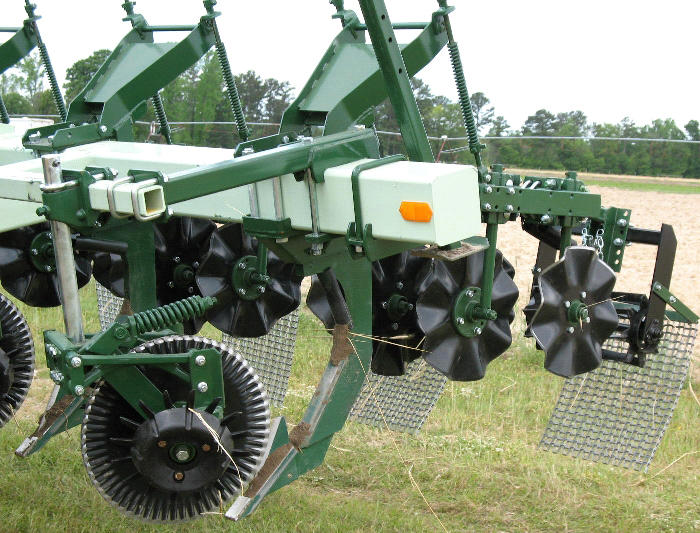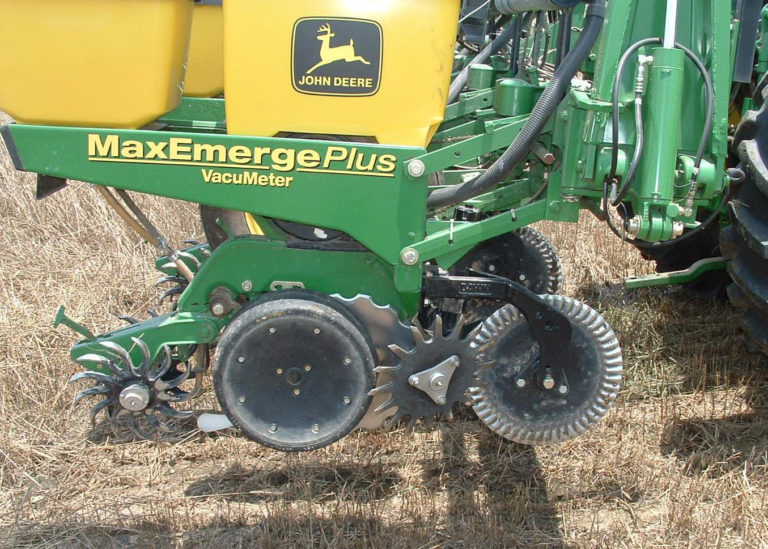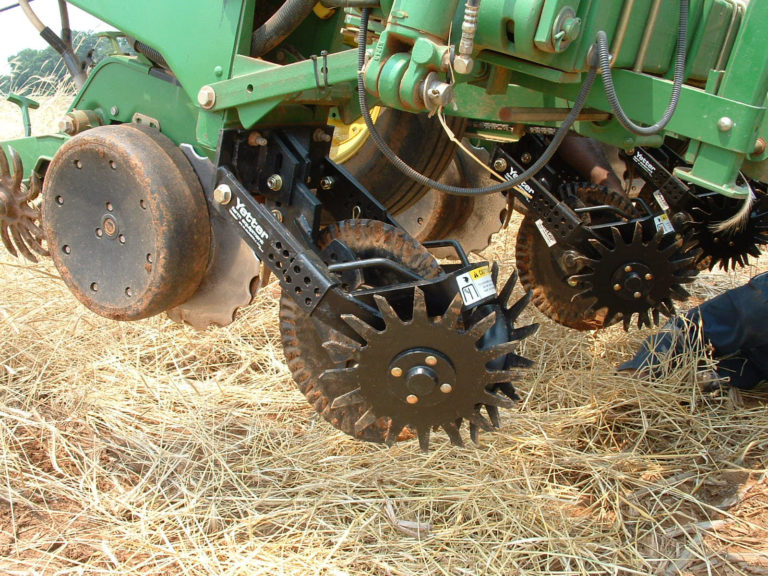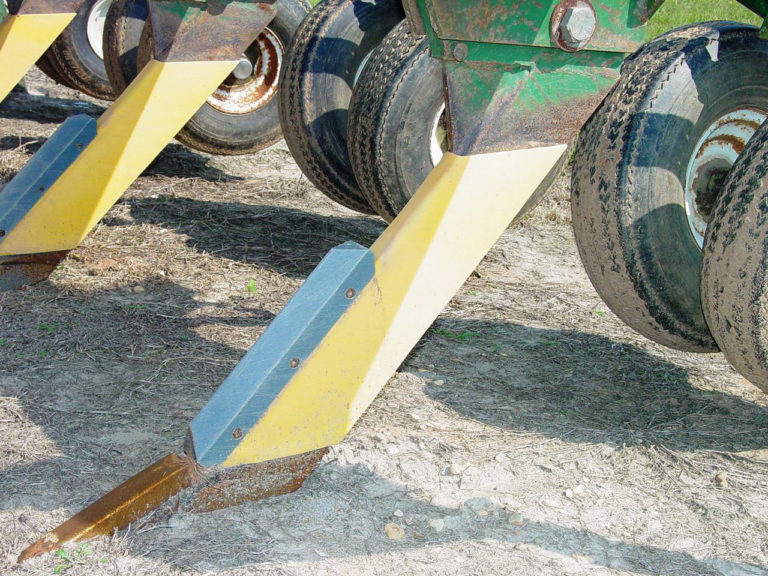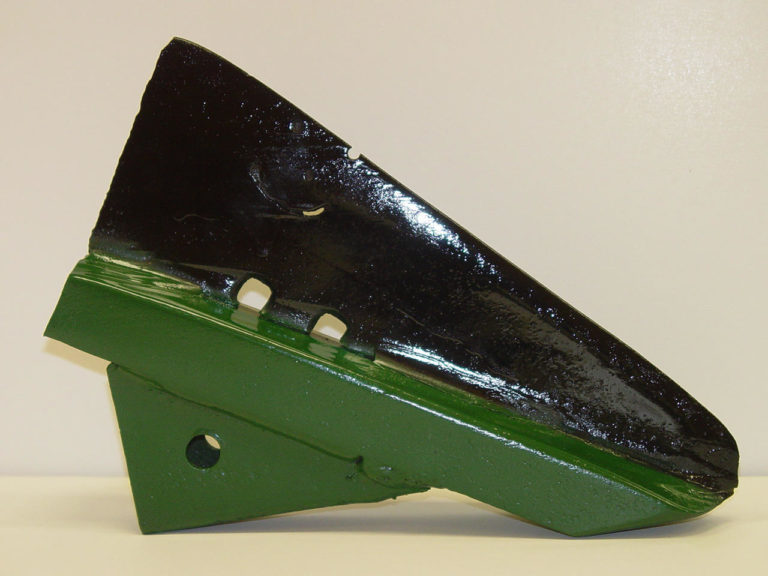In the Southeast, crops in conservation tillage systems are planted in combination with in-row subsoiling, usually 14–16 inches deep, when necessary to break up plow pans and other compacted soil. In-row subsoiling equipment is designed to cut through residue with minimal disturbance and perform non-inversion tillage in a narrow strip along the row. The equipment typically consists of a coulter that runs ahead of a shank to cut the residue. The coulter is followed by such attachments as additional coulters with or without row cleaners, rolling baskets, drag chains, or press wheels (Figure 9.8).
Row cleaners attached to in-row subsoiling implements can be used on cool, poorly drained soils to enable faster soil warming in spring. This allows earlier planting and helps ensure optimal plant emergence conditions. Row cleaners are available for most in-row subsoiling equipment and function much like row cleaners for planters: sweeping cover crop residue away from the row (Figure 9.9 and Figure 9.10). Adjustments for row cleaners on in-row subsoiling equipment are not as flexible as those for planters so they are not as popular.
The coulter must be sharp enough to completely cut residue without pressing it into the seed furrow. Residue in the seed furrow, referred to as “hairpinning,” results in poor seed-to-soil contact and poor seed germination. One or more coulters are used depending on the desired degree of tillage. When in-row subsoiling through cover crop residue, position the coulter in line with the shank but as far forward as possible. This allows the coulter to operate on firm soil and enables it to completely cut residue ahead of the shank. If the coulter is too close to the shank, the soil near the coulter will be loosened by the shank and will not be firm. By cutting residue ahead of the shank, the shank can flow through the soil without residue wrapping around it and being dragged by the shank. Use a properly sized coulter with minimal wear to make residue cutting successful, to prevent hairpinning, and to achieve good seed-to-soil contact.
Fine-textured soils sometimes stick to and accumulate on the shank, disturbing too much soil and making the slit too wide. This can impede planter operations and is referred to as “blowout.” Plastic shields that fit over the shank prevent soil from sticking, therefore minimizing blowout (Figure 9.11).
Another way to reduce blowout is to install splitter points on the subsoil shanks. The splitter points look like shark fins that attach vertically upright to the tips of the shank points (Figure 9.8 and Figure 9.12). They fracture the soil at the bottom of the trench, preventing soil upheaval to the soil surface. The modifications discussed in this section are primarily for older-model in-row subsoiling equipment. Current equipment incorporates these modifications to improve performance in high-residue situations.

